| Dreyse M1907 | |
| Manufactured | Germany |
| Dates | 1907 – 1917 |
| Type Action | SA Preset Striker |
| Caliber | 7.65mm (32 Auto) |
| Capacity | 7+1 |
| Slide Material | Steel |
| Frame Material | Steel |
| Trigger Pull | 6 Lbs 2 Oz. |
| Barrel Length | 3.66″ |
| Rifling | 4 Groove |
| Sights | Blade / V Notch |
| Sight Radius | 5.50″ |
| Type Safety | Rotating Catch |
| Overall Length | 6.29″ |
| Overall Height | 4.25″ |
| Grip Thickness | 1.25″ |
| Weight | 25 Oz |
The last time a relic firearm appeared on Real Guns® the question was asked, “If these old firearms are so good, why are they no longer manufactured?” The simple answer is that they present yet more opportunities to enjoy firearms. Firearms with a little bit of character present opportunities for enthusiasts to conduct objective performance comparisons, opportunities to become a student of mechanical and aesthetic design, opportunities to see firearms in historical context… a study of important people, places and events.
Expressing an interest in a relic firearm is not an expression of preference or subordination. Some firearm designs are no longer produced because newer designs have rendered them obsolete. Many early firearms not only performed as well as modern firearms, but they were also prime examples of brilliant engineering and highly skilled craft art. Unfortunately, their complexity and hand finishing meant they could not be profitably blister packed and hung on the rack at Walmart with a $300 price tag. The small number of people who could and would buy these more costly products at higher prices was not sufficient to sustain a manufacturing operation.
I like it because… it’s funny looking
Gaston Glock completed the design of his preset striker Safety Pistol in 1979 and his namesake went on to revolutionize the firearms industry. However, 70 years earlier, Louis Schmeisser had designed the Dreyse Model 1907 preset striker pistol and placed it into service with civilians, European law enforcement and German and Austrian militaries1) 3). Preset striker designs were relatively common in early autoloaders. The last bit of trigger pull striker spring compression added a little bit of ignition reliability at a time when primers were not consistently manufactured or easy to detonate.
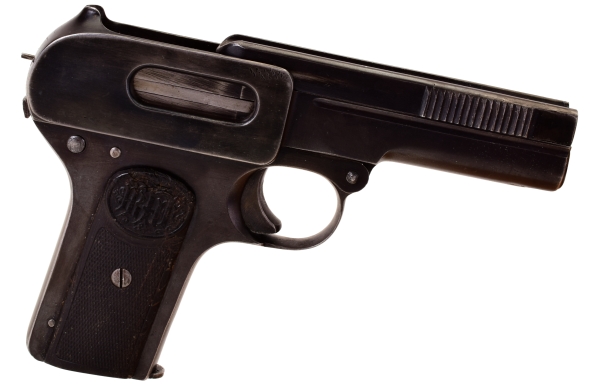
Schmeisser designed the Dreyse pistols for his employer, Rheinische Metallwaaren- und Maschinenfabrik AG of Düsseldorf. While influenced by the John Browning designed Fabrique Nationale, Model 19004), Schmeisser was already an accomplished designer in his own right. Previously, as chief designer for Bergmann Industriewerke of Suhl, Germany, Schmeisser had designed autoloader pistols dating back to 1892 and his machine gun designs were in production for military use prior to 1901.2)
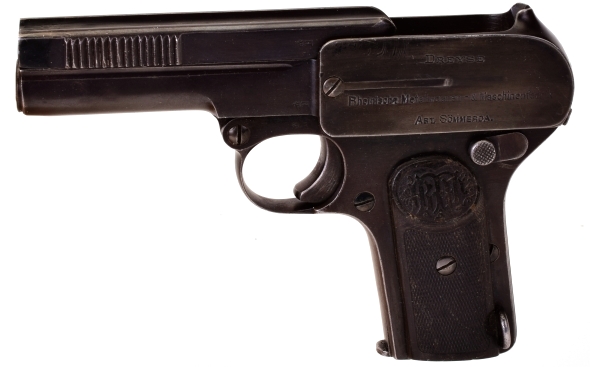
Schmeisser actually designed three types of Dreyse pistols. The first Dreyse Model 1907 was the pictured 7.65mm (32 Auto), the next was a 14 oz. vest pocket 6.35mm (25 Auto) design that was completed in 1909 . The third Dreyse, 1912-1916, was a 9mm Luger chamber which was larger than the 7.65mm, but maintained a similar appearance. The more powerful Luger cartridge required a longer barrel/slide and a way to take its heavy recoil spring’s compression out of play when manually racking the slide to chamber an initial round 2).
Approximately 250,000 units of all types were produced and sold to police and military consumers with the overwhelming majority of the 7.65mm variety 5). They were sold during shortages of Lugers, they were sold to Saxony police as a preference and they were sold for use by the German State Police after WW I. The number pales in comparison to the Colt 1900, approximately 750,000 units, but the Dreyse was in production for only 8 years.

The deep trough that forms the sight channel in the slide is more visible in the picture above. At the rear is a small “V” notch cut into the rear frame and a thin ramped blade sight sits in the slide recess in the front. The vertical slide gripping serrations, the “Rheinische Metallwaaren- & Maschinenfabrik” stamped into the upper left hand side of its frame, the rounded back slide housing and the center grip screws, and the serial number range 6) identify this as a late first variant pistol.
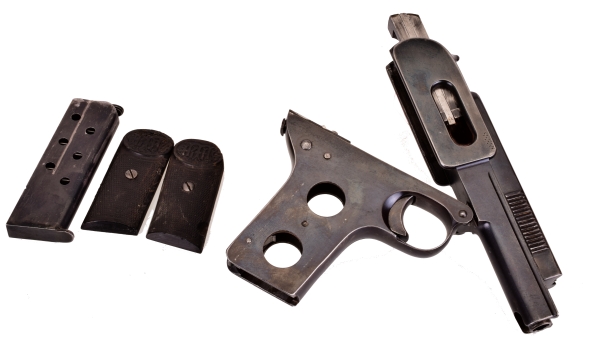
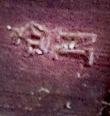
The pistol is marked slide, slide housing and frame with the crown over “N” to signify Nitro Proofed… smokeless powder. This particular example has all matching numbers and shows wear and tear as a 100+ year old pistol should. What it doesn’t have is pitted surfaces. There are so many old pistols of this type on auction sites like Gun Broker that are deeply blued or even Parkerized, clearly over a heavily pitted surface and are erroneously listed as 99% original bluing. It is impossible to have original bluing over heavy pitting. I’d rather have a pistol with bluing turning plum and no pits.
With the slide housing release and flipped up, there is now clear access to… virtually nothing, other than the extended tab on the firing pin under the breech bolt. The barrel is still secured within the slide housing by a keyed barrel bushing and heavy recoil spring.
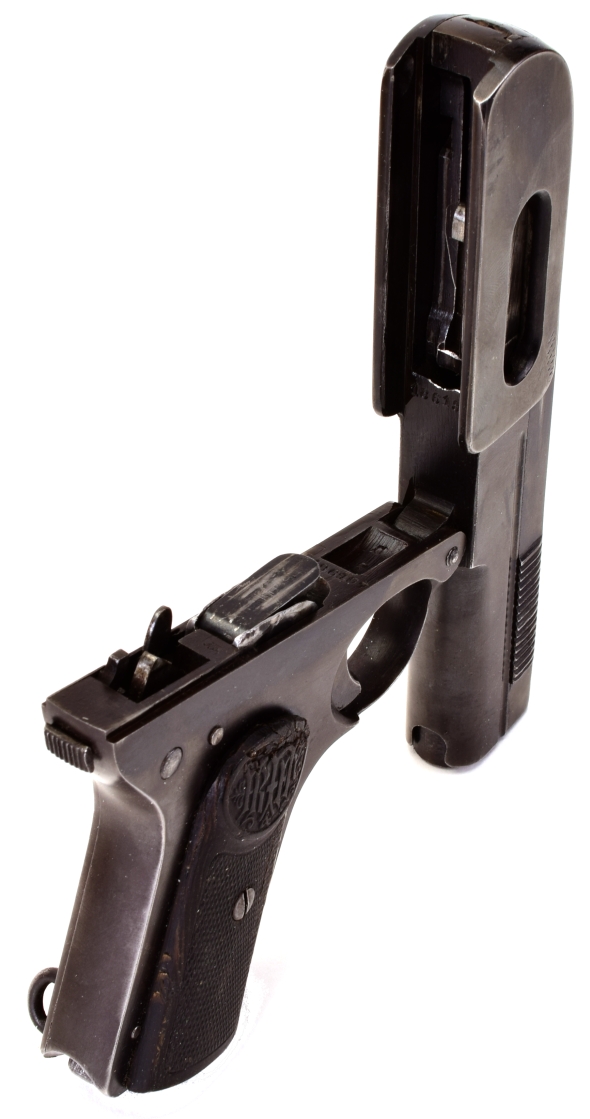
The need for periodic tweaks is common place with older firearms. This one was advertised as a shooter, however, the magazine feed lips were straight up and down and barely retained the magazine follower. Racking the slide resulted in two rounds being stood up and wedged sideways between the breech bolt and barrel. Two minutes spent correcting the feed lips with a pair of parallel jaw pliers easily fixed any feed and cycling problems, including use with hollow point ammo.
Cause it’s got… Personality
The Dreyse 1907 has a bit of heft for a 32 Auto, which made it very steady on target, gave it a slight muzzle heavy feel and dampened what I would term already light recoil.
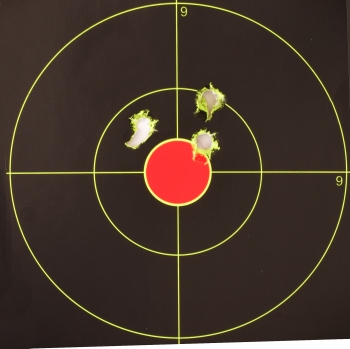
The sights are good for precise aiming, not at all adjustable and too fine for getting on target quickly in all but bright light or picking up a target against a dark background.
The trigger pull checked 6 Lbs 2 Oz. and felt like the trigger on a grease gun. For as blasphemous as it may sound, practice can overcome even a bad trigger with a little practice. Could the trigger be reworked for lighter pull, less creep and reduced over travel? Sure, but it is a striker design and I suspect it would always be a bit Glockish.
This pistol has a clean bore with sharp rifling, but it would not pass for a target pistol. In very cold weather, wearing only a sweatshirt and listening to my teeth chatter, 1″ to 1 1/2″ three shot, point and poke groups with even low cost ammo were routine at 10 yards.

What impressed me the most about the Dreyse was its ability to reliably digest and cycle 32 Auto ammo of virtually any type, something not at all common with modern 32 Auto pistols. What impressed me the least is the pistol’s very short grip that kept two fingers below the grip and having to rely on the others to support a relatively heavy top end and that is a condition I can’t fix or accept in a personal firearm. So I learned a bit, had a lot of fun and will move the pistol along to someone else it might better suit.
1) Standard Catalog of Military Firearms, Petersen
2) German Handguns Ian V. Hogg
3) Small Arms 1914 – Present, Dougherty & Haskew
b4) The History of Browning Firearms, Miller
5) The Luger Story, Walter

Email Notification